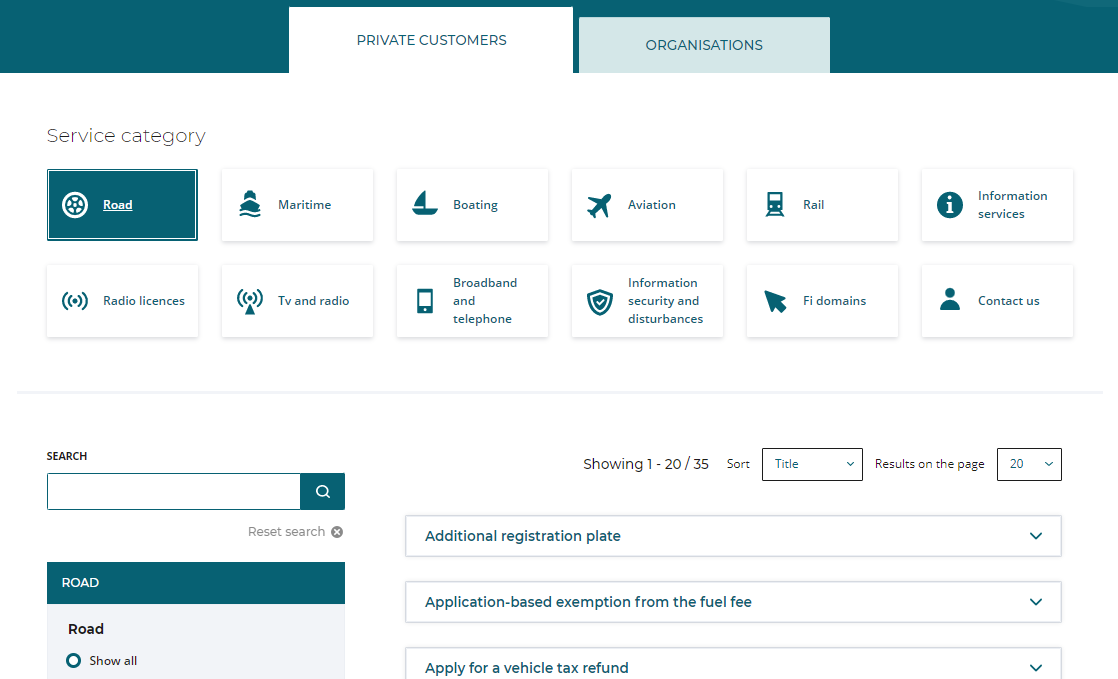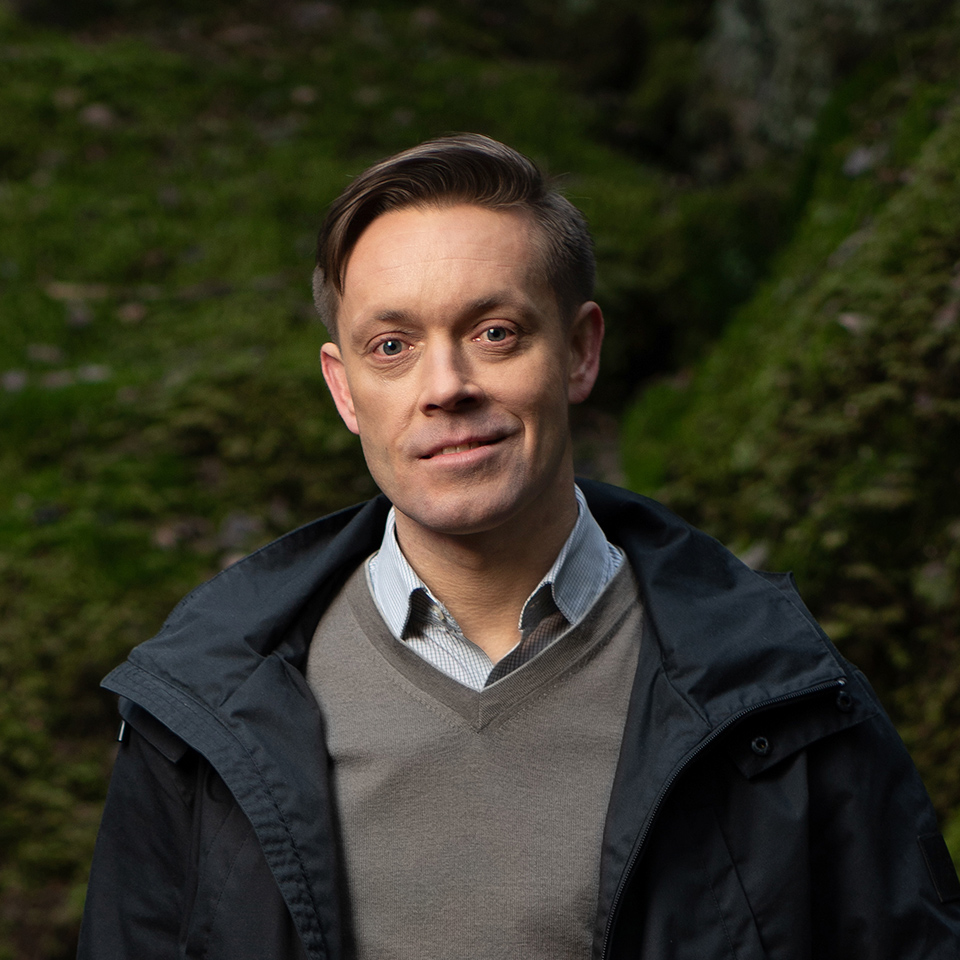Traficom´s digital self-service channel entity is certainly one of the most versatile of its kind in Finland. You can deal with permit issues related to, for example, road traffic, boating, or the use of a drone. Some of the most used services are vehicle registrations and change of vehicle ownership. Traficom’s online services can also be used as a representative of a company or an organization.
North Patrol is a consulting firm specialized in the design of digital services and information systems. We shape ideas into a vision and service concept, find the best architectural and technological solutions, design a functional user experience, and compete to find the ideal partner for implementation work. We do not sell implementation projects, nor do we sell licenses; we are genuinely on the side of the customer.

The Finnish Transport and Communications Agency Traficom is an authority in permits, licence, and monitoring of transport and communications. The organisation began its operations in 1.1.2019, when The Finnish Transport Safety Agency (Trafi), the Finnish Communications Regulatory Authority (FICORA) and certain functions of the Finnish Transport Agency were merged into one operator. Traficom promotes the functionality and safety of the Finnish transport system and accelerates the development of a digital society.
A large-scale renewal project
For Traficom´s transport related online services, the platform Liferay had been used for a long time. However, the agency had begun to consider the possibility of building an architecture to support multi-channel online services.
Discussions were fueled by doubts about the inadequacy of the outdated Liferay platform's security and its ability to meet accessibility requirements set by the EU Accessibility Directive. The version update, together with the development work required for the platform, were found too laborious. Additionally, the shortage of available Liferay experts had made the development work even more difficult.
After reflecting on the situation in 2019, Traficom made a significant decision to stop using the Liferay platform. In the future, the online service would be replaced by a micro-service architecture and modern open source solutions. North Patrol assisted Traficom in designing the controlled platform change as well as the planning the architecture.
"The architectural direction and technological choices as a whole can be considered successful," says Development Manager of Traficom's digital channels Maaria Toikka. "This has also been reflected in the availability of developer resources."
The development and implementation of the services together are around a 3-4-year project. In the first phase, a completely new platform for online self-services has been implemented together with the supporting Suomi.fi services, and the first services for users were connected to the platform. During the long transition period, the functionality and reliability of both new services and old Liferay-based services must be ensured.
To support the modernized online services, a renewed Traficom.fi website was published just before the new platform. From the user’s point of view, the website offers the user a path to the self service platform.
“The aim is for the Liferay platform to be phased out by 2024 at the latest. The development schedule is naturally affected by the available budget and resources,” Maaria says, emphasizing that the current schedule estimate has been made on the assumption that developers will continue to be available as required.
The project benefits from having many partners
A renewal project of this size requires a lot of skilled resources. "A large number of people have participated in the project and therefore coordinating the entity is both interesting and challenging," Maaria says. The agency's own staff handle suppliers and resourcing, coordination of the entity at the top level, planning and defining the services, as well as coordinating the content. Additionally, several experts from the agency are involved in planning the architecture of the platform, the construction and maintenance of environments, the data protection and security of the services, and the management of projects.
The user interface design and coordinating the implementation, as well as the actual technical implementation work and related testing is all acquired from partners. All in all, the project has involved experts from eight different partners. “The roles of a Scrum master who coordinates the teams at practical level, and project manager, were filled through the agency's consulting contracts,” Maaria says, adding: “In addition, the operating services were outsourced through Valtori´s tendering.”
The multi-partner environment has proven to be a good solution, especially when it comes to the greatest need for resources, the developer resources. “There has been little turnover in our team. If necessary, obtaining a replacement resource has also been effortless, at least for the time being. If one partner has not had a suitable resource available, it has been found from another partner,” says Maaria.
The reform project is a large, coordinated entity. Maaria emphasizes the importance of cooperation:
"Good cooperation and active, conversational interaction between all actors involved in the project has helped in this work."
Successes and challenges encountered along the way
The renewal project is still in many respects underway, but at this stage the success can be attributed to the improvement in the quality of design compared to previously implemented services. Architecture, specification, engineering, data protection design, data security, as well as usability and accessibility have been at the heart of the project from the beginning. This has required a strong commitment and patience on the part of those involved to finetune it from a variety of perspectives against stringent requirements.
Some challenges have also been encountered during the project. “It took longer than expected to acquire the resources that were tendered for the implementation and maintenance of the services. In addition, the introduction of the new technology has been a bit more challenging than expected,” Maaria explains the slightly delayed schedule. The situation was partly complicated by the agency's employee co-operation negotiations and the partial change of internal resources.
“On the other hand, changes, schedule and resource challenges are part of a changing internal and external operating environment. Therefore, schedules and plans need to be maintained to continually reflect these changes. The key to success is to invest sufficiently in the planning of the whole entity and to split and prioritize the implementation phase in a sensible way, ” Maaria concludes.
(This article has been translated from the Finnish original. Read the original article.)
Further reading about methods used in this project


